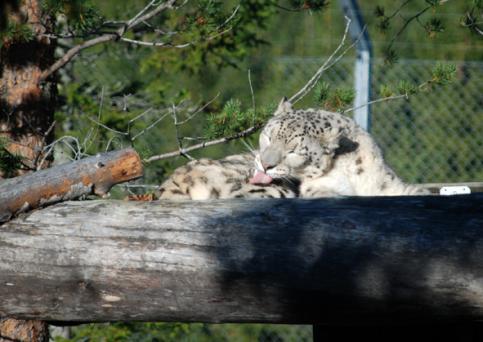Introduction

Due to a large number of felid species being endangered they are subjects to conservation
projects both in situ and ex situ. Felids are solitary nocturnal animals with large home ranges which makes them challenging to manage in zoos with optimal welfare. Problems such as for instance low fecundity, young mortality and stereotypic behaviours, most frequently pacing, are common.
Low fecundity and breeding success in many felids are severe problems in the conservation work. Unsuccessful breeding might be a result of long-term or chronic stress due to poor welfare. Stereotypic behaviours in carnivores are strongly connected with natural ranging behaviour. The larger the home range and species-specific daily travel distances the more stereotypic behaviours and also higher infant mortality rates. Because space is an issue in many zoos it is hard to provide the wide ranging felids with enough enclosure space. Environmental enrichments are instead used to increase animal welfare and decrease or inhibit occurrence of stereotypic behaviours but is not enough to solve the problems.
To successfully manage wild felids in zoos with an optimal welfare we need to have more knowledge about which resources are most important for the welfare and how these needs differ among the different felid species.
Aims
The aims of this study was to (1) review published literature on welfare in zoo kept felids and (2) examine EAZA's husbandry guidelines, in order to map out the state of knowledge about felid welfare and their needs, and to compare practiced husbandry of felids in zoos with the scientific findings to see if anecdotal and scientific knowledge collides.
Finally in order to try to find an order of priority in availability of resources to do a (3) behavioural study of enclosure usage and use of resources in the enclosures in seven species of felids; Amur tiger (Panthera tigris altaica), Sumatran tiger (Panthera tigris sumatrae), Amur leopard (Panthera pardus orientalis), Persian leopard (Panthera pardus saxicolor), Snow leopard (Uncia uncia), Cheetah (Acinonyx jubatus) and Pallas’s cat (Otocolobus manul).
Responsible for this page:
Director of undergraduate studies Biology
Last updated:
05/10/16
